
Brent Toderian is the former chief planner for Vancouver and writes regularly for Spacing Vancouver
![]()
This week, I watched with concern Canada’s largest city have a rhetoric-heavy debate about removing the relatively new separated bike lane on Jarvis Street. They even originally had the intention of using bike-lane funds to remove it!
Bike-lane debates have been going on for some time in Toronto, as they have in many cities like Vancouver. In recent years, exaggerated and polarizing phrases like “anti-car” and “the war on the car” have been thrown around irresponsibly by media and politicians alike, making me wonder more than a few times if Fox News had moved to the place once called “The City That Works.”
I suppose it illustrates part of the problem, that I feel the urge to point out I don’t consider myself a “cyclist.” Calling myself that would seem as odd as calling myself a walker, a transit-rider, or a driver. I’m an urbanite, someone who loves living in cities, and an urbanist who has studied how cities work all of my adult life. Really, I’m a citizen.
I point that out because there is too much pitting of self-described “drivers” and “cyclists” against each other. Most North American families are actually multi-modal – they drive, walk, and probably take transit and bike in at least certain circumstances, if not routinely. Certainly many who cycle, also drive, and visa versa.
We need a more sophisticated discussion about how we get around in cities, and it starts with this — it’s not about loving your bike. It’s about loving what biking does for cities. If more cars make cities worse, the opposite is true for bikes. Expanding urban biking is about making better, fiscally smarter, healthier, more flexible and resilient cities. Bikes are hardly a silver bullet, but they can be a big part of better city-making.
Canadian cities aren’t alone in recognizing the opportunities urban biking provide. In fact, we’re behind. Inspired by successful cycling mecca’s like Copenhagen, Amsterdam and Bogota, cities like New York, Chicago, Minneapolis and Portland in the U.S., Sydney and Melbourne in Australia, Paris in Europe, and Montreal here in Canada are transforming themselves around urban cycling. They aren’t doing half-measures. They’re making big moves.
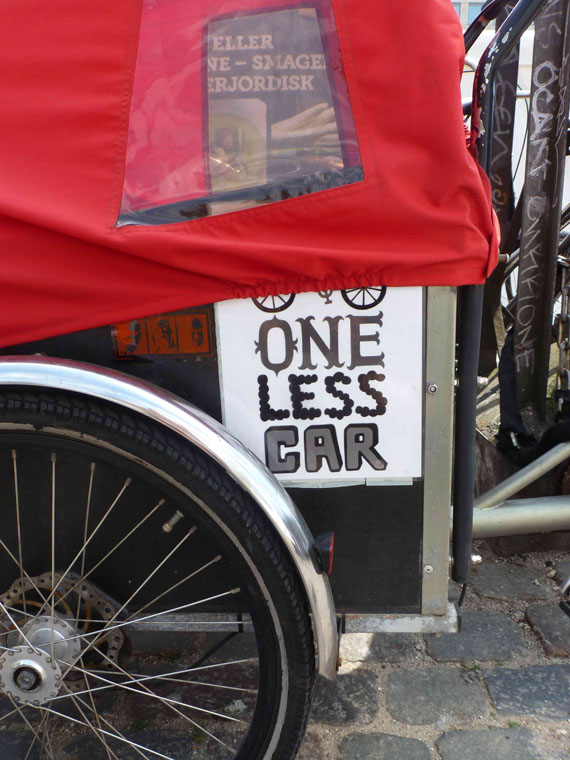
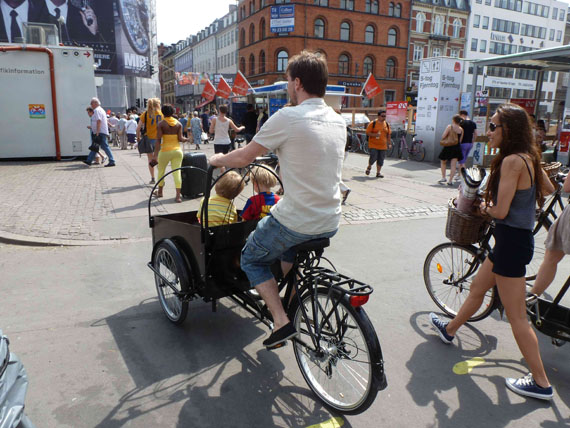
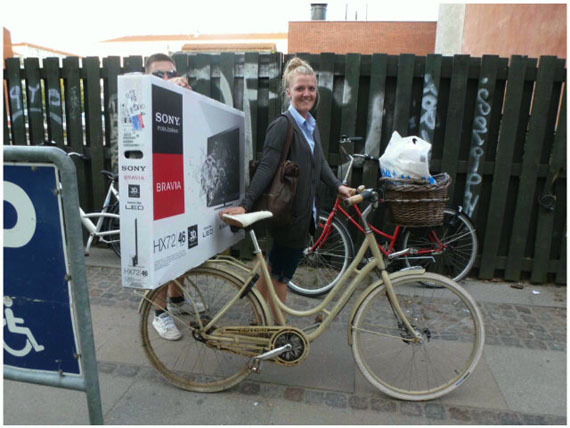
City-builders across the globe understand the relative cheapness of the bike mobility option, in both cost and space. Dollar for dollar, bike lanes move people more cost effectively from a return-on-investment perspective than any other way of getting around, especially once a tipping point of cyclists is reached — and that doesn’t even factor in the well-documented public health cost savings that come from widespread biking. Global studies have shown investing in cycling infrastructure actually saves society public money per kilometer cycled! The math is enough to make any real fiscal conservative hop on a two-wheeler.
Most pragmatically, city-builders understand that bikes make cities work better because they take a lot less space. Even if cars were clean in emissions, the biggest challenge with car-dependency is a space problem. There isn’t enough room on the roads and parking lots of cities, to have everyone drive. They just don’t fit, and our failed efforts to make them fit, cost a staggering amount. This striking picture illustrates the point. If all the people we anticipate coming to our cities try to drive, cities fail, our public life fails, and our economies fail.
Even if they prioritize driving, global city-builders recognize the best thing those who feel they need to drive could hope for, is for OTHER people to be able to walk, bike and ride transit. Multi-modal cities make it easier for EVERYONE to get around – including, counter-intuitively, drivers.
For us in Vancouver it’s been about becoming more multi-modal for decades, a city of choices and options, and a city where the local economy and quality of life is impervious to the growing car congestion paralysis seen in too many world cities. It hasn’t been about being anti-anything. It’s been about being pro-mobility freedom. Pro-city.
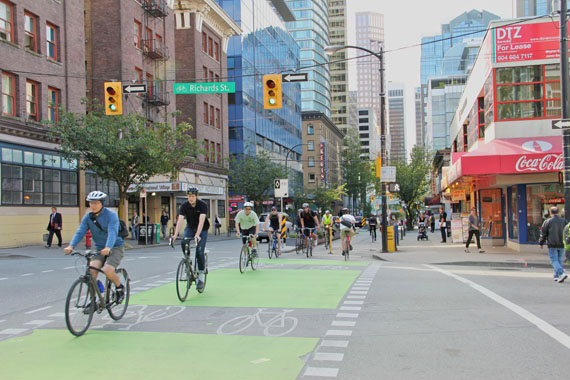
Photo courtesy Paul Krueger
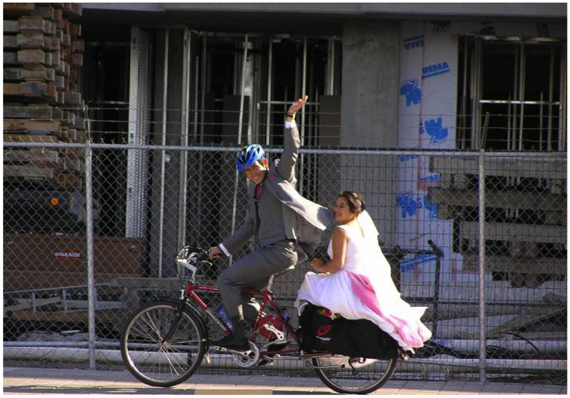
We’ve understood in Vancouver for years that mobility flows from smart land use choices, and the best transportation plan is a great land-use plan. Mixing uses, in complete communities. We know that trying to address congestion through more roads always fails, because of the “law of congestion.” As the saying goes, trying to address congestion by adding more roads is like trying to solve obesity by loosening your belt.
Watching Toronto’s debate, we in Vancouver might feel a big smug. Then we might remember the steady level of controversy that bike-lane construction has generated even here. I would remember that in past weeks of media interviews, they’ve tended to start with questions like “When will we have too many bike lanes?” or “Don’t we have enough already?”
Like walking, transit and car-driving, a few separated routes through a large, still car-dominated city and region, don’t create a viable choice in how to get around for people aged 8-80. For people of both genders and all ages to choose a mode of movement, a system or network is needed – complete, connected, efficient, predictable, and safe in both perception and reality. We have a long way to go in Vancouver.
The pragmatic, cost-effective power of urban biking could go a long way in getting Toronto that old nick-name back – “The City That Works.” Keeping the Jarvis bike infrastructure, and using that $300,000 to build more, would have shown they’re serious about that. Instead, the wrong discussion led to the wrong decisions.
In a recent Globe and Mail article, I called for an end to the oversimplified, polarized debate on bike-lanes, and a start to a more sophisticated discussion on how cities work. The article ended with my statement, “Bike lanes are not a fad. They are part of a multi-modal city, a critical part of the city working well in the future.”
Let’s have that more sophisticated discussion start now, in Toronto, in Vancouver, and every city struggling to make their city work better.



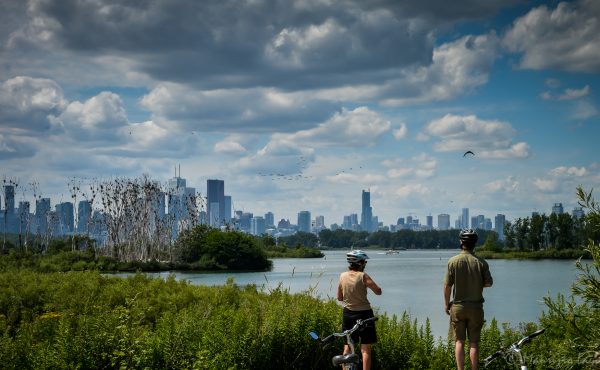

6 comments
Thank you for such an informed and civil article. Multi-modal mobility is not even on the horizon here, except in a limited and polarizing debate over transit and cars. Maybe we should twin with you guys?
Edward, don’t be too pessimistic. Multi-modal mobility is on the rise here as well, just in Toronto’s typical three-step-forward-two-step-back fashion. Cycling is way up in downtown area, transit use keeps breaking record. Eventually even if Toronto does not want to embrace it, the economic inevitability will drag Toronto there screaming.
I see your first problem. You’re thinking as a “citizen”. In Toronto, as per our illustrious Mayor, the correct term is now “taxpayer”.
One quibble: The Jarvis bike lane was not separated. This made it of limited utility, as few people are comfortable cycling while multi-tonne lethal weapons hurtle a few cm from their elbow.
In particular, few children used these lanes to cycle to the many schools on Jarvis. These lanes are just not safe for children to use because of the lack of protective barriers.
Great pragmatic approach. Simple enough argument, approach the problem with solutions for all sides, not an either or. @Edward, case in point: New Condo unit(s) King West 892 units, 1001 parking spots (includes retail), 412 biking spots and 3 for shared car services. Even though it seems like a lot of spots, most of those will be taken on day one.
While not a citizen(taxpayer) of Toronto, I can relate to the issues you describe — they are seemingly universal in North America. It is all too easy to “tag” someone as one or the other in a polarized debate.
Simply put, though, I would respect another’s right to choose their own mode of travel, if they would respect mine, and not be aggressively condescending towards me. You want to drive? Drive, and leave me alone to ride. I’m not subject to your opinions about where I do & don’t belong, nor do I care about your opinion of my masculinity. I’m obliged to follow the LAW, not your interpretation of it. (And, when the snow’s falling, the roads are slick, and I’m still pedaling, just live with it, I know what I’m doing.)
We — auto user and bicycle user — CAN get along. Try the old, biblical “Golden Rule” — in my words, “treat other people the way you want to be treated.” I teach it to my kids, and recommend it to you.